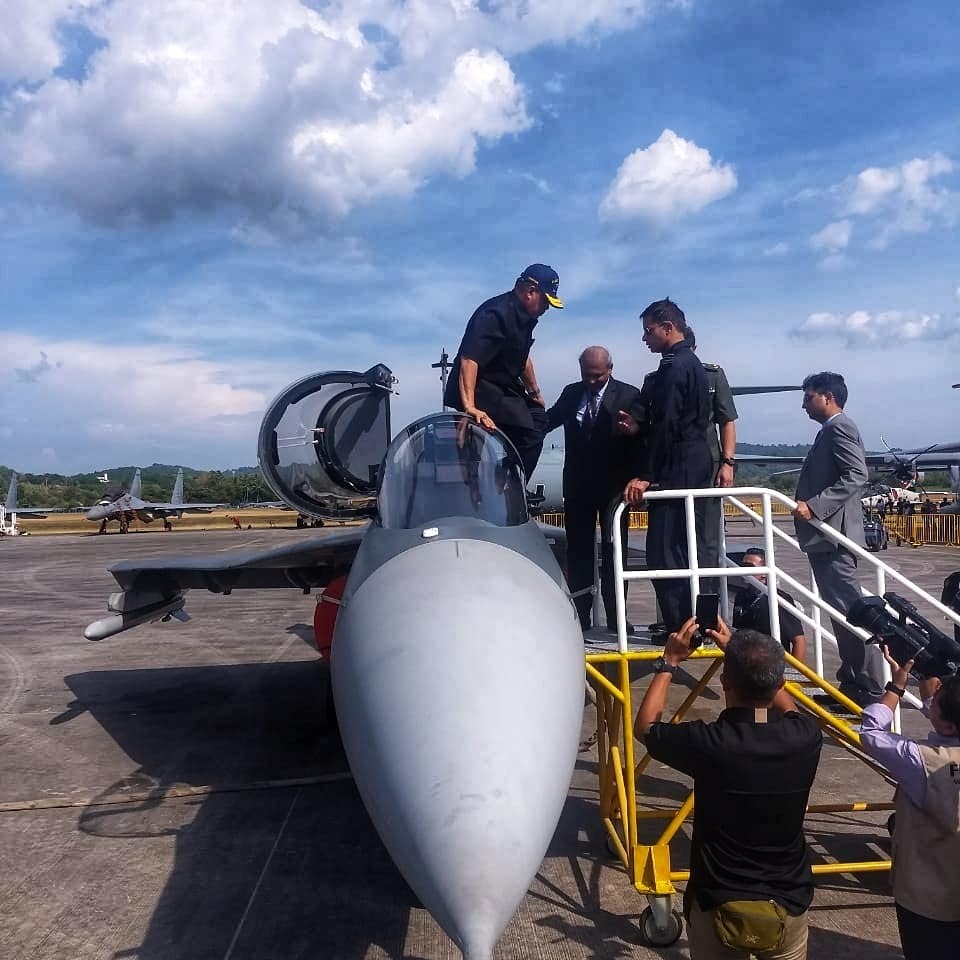India’s multi-role Tejas fighter has captured the imagination of the Malaysian air force for quite some time now. The 4.5 generation Light Combat Aircraft (LCA) later enthralled the audience when it performed at the 2019 Malaysian Air Show at Langkawi International Maritime and Aerospace Exhibition (LIMA-2019).
The combat jet impressed the crowd with its artful maneuvers, engaging in loops, slow speed passes, minimum radius turn, maximum rate turn, negative G turn, along with point rolls.
It was the first international performance of the indigenous Indian fighter produced by India’s state-based company Hindustan Aeronautics Limited (HAL).
Malaysia’s air force is in dire need of new and modern combat aircraft and its ageing fighter fleets need up-gradation. The Malaysian Air Force chief Gen. Affendi Buang had said that 40% of the country’s combat fleet – which includes British, American and Russian fighters – needs urgent up-gradation.
Tejas fighter
Consequently, the country floated a global tender to procure a variety of different aircraft, ranging from fighter trainers to medium-range combat aircraft (MRCA). The Royal Malaysian Air Force (RMAF) intends to fill the operational and combat requirement gaps by ordering a certain number of combat jets in a two-stage process.
Along with India’s multi-role LCA Tejas, which has reportedly emerged as the top contender in the race, other aircraft in the fray include the Swedish Gripen, Pakistan’s Chinese origin JF-17 jet, the South Korean T-50, among others.
Who is Leading the Race?
During its 2019 air show presence in Malaysia, Tejas attracted the curiosity of the then Malaysian PM Mahathir Mohammad, who experienced the cockpit of the aircraft first-hand and was reportedly impressed with the systems and design.
Former Malaysian PM Mahathir Mohamad inspecting Tejas at Malaysia air show (file photo)
India and Malaysia have similar operational needs and weapon types with both countries using considerable Russian and NATO systems.
The two countries even match in their military strategy and the use of defense technologies. That will offer an advantage for Malaysia if it chooses Tejas which can accommodate both Russian and Western weapon systems, with both countries operating an amalgam of the fighter aircraft from both blocs.
With India said to be offering the latest version Mk1A, which features modern AESA radar, new avionics and the capability to integrate a variety of weaponry, it will be hard for the Malaysian Air Force to ignore Tejas.
The fighter also boasts of enhanced maneuverability, aerodynamics, maintainability and pilot survivability, self-protection jammer, radar warning receiver and external ECM pod.
To sweeten the deal, India has offered to establish a Maintenance, Repair and Overhaul (MRO) facility in Malaysia to ensure high-rate availability of the aircraft.
At approximately $42 million per unit, Tejas is an economical choice for RMAF, considering it brings a wide range of modern capabilities to a multi-role fighter and has an operational edge over Pakistan’s JF-17 in many respects, the experts say.
Moreover, the Indian Air Force’s recent order for 83 Tejas aircraft has helped scale down the prices significantly. Malaysia is likely to place an initial order for 12 jets, and go for 24 more at a later stage.
With a team from the country visiting India for assessing the suitability of the aircraft within months, there is great competition expected between LCA Tejas, JF-17, and Korean FA-50
JF-17 vs LCA Tejas
Compared to JF-17, Tejas has a combat edge with its more potent engine, radar system, and electronic warfare suite, and not to forget the Beyond Visual Range (BVR) missile capability according to IAF experts talking to the EurAsian Times.
JF-17 also comes with a Russian engine, about which Malaysia’s experience has not been good when it comes to serviceability. The country also operates the Russian MiG-29s with similar engines, which are said to require significant after-sales support and maintenance.
However, Tejas is powered by a General Electric F404 engine, also used in Malaysia’s F/A-18s, which has delivered satisfying performance.
With Kuala Lampur engaged in maritime border disputes with Beijing, there’s are chances that the country could prefer the Indian or even Korean fighters over that of Pakistan.
Malaysia and China have been locked in a tense standoff in the South China sea over exploration rights, with Chinese naval vessels repeatedly harassing the former’s exploration and drilling ships and other sea assets.
Experts say that Kaula Lampur takes the Chinese threat very seriously, and this could be a major factor in deciding the top contender for its combat aircraft procurement deal.
This could explain why Malaysia has been keen on spending more time studying India’s Tejas, with a team heading again for India in the coming few months.
Nitin J Ticku a political analyst with the EurAsian Times says that buying a fighter jet is not a simple process as all these decisions are politically motivated. A country’s air force aspires to have potent fighter jets that also suits the political interest of the ruling government.
The purchase of the JF-17s would bind Malaysia with the Chinese weapons while the FA-50 or LCA Tejas would give them access to ‘trusted’ Western technology, despite being of Korean and Indian origin.
LCA Tejas Or JF-17: Along with Indian LCA Tejas, other jets in the fray include Swedish Gripen, Pakistan's JF-17 jet, the South Korean T-50.

eurasiantimes.com



 is not even present on their Republic Day.
is not even present on their Republic Day.









